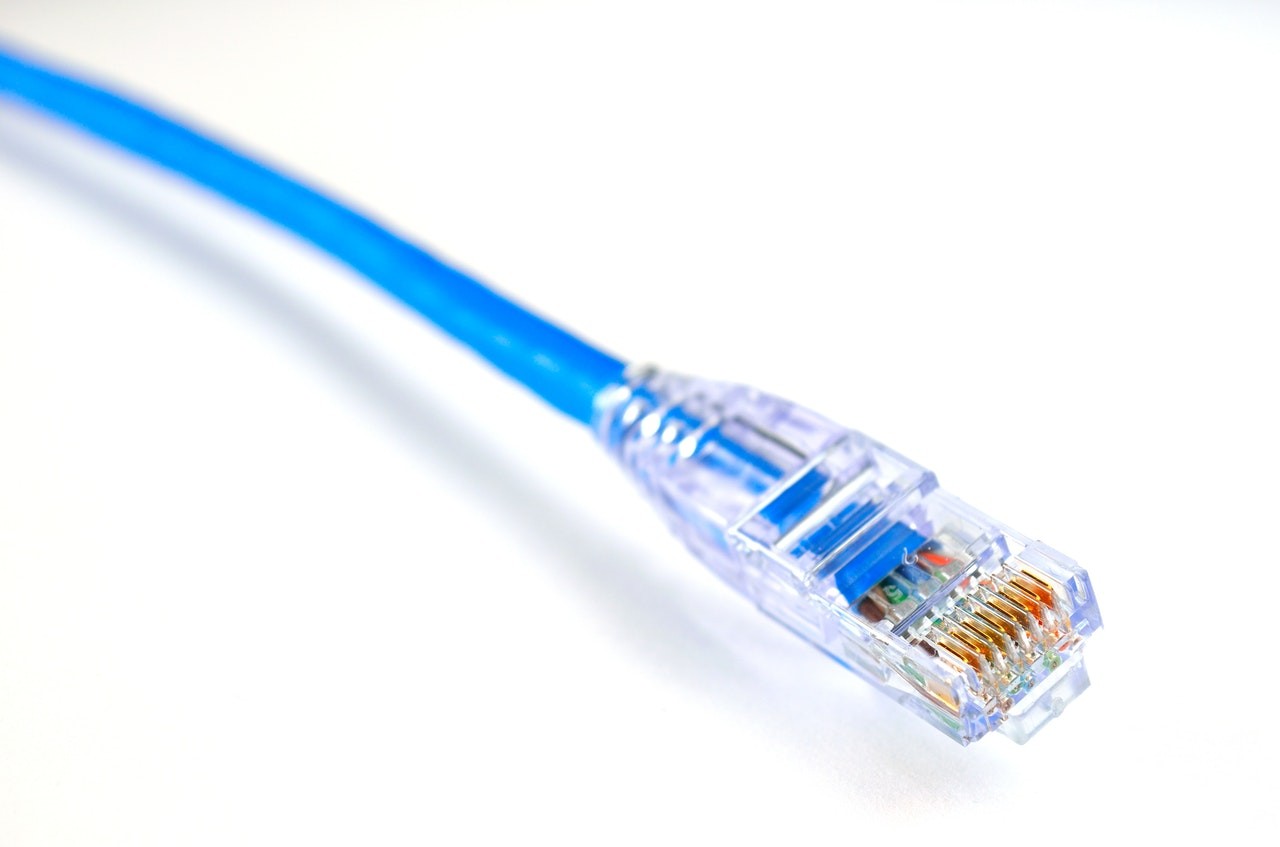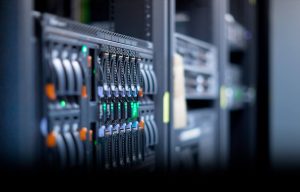Have you ever had a problem with your router because of its firmware? Or you need to buy a longer CAT5 cable for your ethernet card? Want to know what buffer, bandwidth and broadband really mean?
We at Minneapolis-based OAC Technology put together a list of common networking terms to help you translate tech jargon and geek speak to plain, ordinary English. (Or we can handle it all for you with our Network Installations & Support.)
- Access List – List kept by routers to control access to or from the router for a number of services. For example, the list can prevent packets with a certain IP address from leaving a particular interface on the router.
- Adapter – Hardware that allows a computing device physical access to a network.
- Address – A numerical designation that uniquely refers to a specific communication entity.
- Algorithm – A set of rules and decision structures for actions in a specifically defined set of circumstances.
- Alphanumeric – Referring to a group of printable characters that includes the letters of the alphabet in both upper and lower case, the numerals plus a limited group of additional symbols and punctuation marks.
- API – Application Programming Interface. A set of tools and procedures provided by the programmer of an application so that other programmers can control, exchange data with, or extend the functionality of an application.
- Architecture – The sum total of all of the specifications, protocols and implementations that define a particular networking system.
- Archive – A storage of infrequently-used or historical data.
- Back End – Node or software program that provides services to a front end.
- Background Task – A computing task that is executing while another task or application is displaying its user interface.
- Bandwidth – Bandwidth is loosely used to refer to the information-carrying capacity of a network or component of a network.
- Benchmark – A test performed to compare a computer process in one set of circumstances to another.
- Binary – Data that is encoded or presented in machine-readable form (1’s & 0’s).
- Bitrate – The rate at which bits are transmitted or received during communication, expressed as the number bits in a given amount of time, usually one second.
- Boot Drive – The disk that contains a computer’s startup instructions.
- BPS – Bits Per Second. A commonly-used measure of the rate of data transmission that specifies the number of bits that are transmitted in one second. May be prefixed with multipliers such as K, M, and G which indicate rates of thousands, millions and billions of bits per second.
- Broadband – A transmission system capable of carrying many channels of communication simultaneously by modulating them on one of several carrier frequencies.
- Buffer – A temporary memory storage area for information.
- Bug – A flaw in a software program.
- Cache – Temporary storage of data, especially frequently-used data or data needing high speed retrieval by the CPU.
- Case Insensitive – Referring to a system in which upper case letters are not differentiated from their lower case form.
- Case Sensitive – Referring to a system in which upper case letters are differentiated from their lower case form.
- Category 5 cabling (CAT5) – Category 5 cabling is used for wiring most ethernet networks and can transmit data at speeds up to 1000 Mbps.
- Checksum – The result of a mathematical operation that uses the binary representation of a group of data as its basis, usually to check the integrity of the data.
- Client/Server – A type of relationship between two computers where the two have different roles in the relationship. Typically, the client computer drives the relationship and uses a resource of the server computer.
- CODEC – Coder-decoder. Device that typically transforms analog signals into a digital bit stream and digital signals back into analog.
- Compression – An alteration performed on a unit of information intended to increase it density during storage of transmission.
- CPU – Central Processing Unit. The main processor in the computer’s configuration that handles processing tasks or directs coprocessors to perform them.
- Database – A collection of data that can be selectively retrieved by a type of application known as a Database Management System.
- Decryption – The reverse application of an encryption algorithm to encrypted data, thereby restoring that data to its original, unencrypted state. See also encryption.
- Device Driver – Software that acts as an intermediary between a CPU and a peripheral device. The CPU sends a command to the device driver, which translates that command into a command meaningful to the peripheral device.
- DNS – Domain Name Service
- Domain – In the Internet, a portion of the spanning hierarchy tree that refers to general groupings of networks based on organization type or geography.
- Drive – A data storage device.
- Email – Electronic Mail. A network application that can deliver messages from one computer user to another.
- EMI – Electromagnetic interference. Interference by electromagnetic signals that can cause reduced data integrity and increased error rates on transmission channels.
- Encoder – Device that modifies information into the required transmission format.
- Encryption – The application of a specific algorithm to data so as to alter the appearance of the data making it incomprehensible to those who are not authorized to see the information. See also decryption.
- Ethernet – A system for connecting a number of computer systems to form a local area network, with protocols to control the passing of information.
- Extension – A software addition that extends its functionality.
- FCC – Federal Communications Commission. The United States government agency that regulates electronic communications and the domestic manufacture and importation of communication equipment.
- Fiber-optic Cable – Physical medium capable of conducting modulated light transmission. Compared with other transmission media, fiber-optic cable is more expensive, but is not susceptible to electromagnetic interference and is capable of higher data rates. Sometimes called optical fiber.
- File Transfer – Popular network application that allows files to be moved from one network device to another.
- Firewall – Router or access server, or several routers or access servers, designated as a buffer between any connected public networks and a private network. A firewall router uses access lists and other methods to ensure the security of the private network.
- FireWire – High-speed external data bus for the connection of storage devices, external video and image I/O, etc.
- Firmware – A collection of programmed routines and instructions that is implemented in a computer chip or similar hardware form instead of a software form.
- Flash memory – Technology developed by Intel and licensed to other semiconductor companies. Flash memory is nonvolatile storage that can be electrically erased and reprogrammed. Allows software images to be stored, booted, and rewritten as necessary.
- FTP – File Transfer Protocol. Lowest-common-denominator protocol for the point-to-point transfer of text and binary files between IP connected hosts.
- Gateway – A TCP/IP router that routes packets between different network numbers.
- GB – Gigabyte.
- GBps – Gigabytes per second.
- Gb – Gigabit.
- Gbps – Gigabits per second.
- GHz – Gigahertz.
- GUI – Graphical User Interface. User environment that uses pictorial as well as textual representations of the input and output of applications and the hierarchical or other data structure in which information is stored. Conventions such as buttons, icons, and windows are typical, and many actions are performed using a pointing device (such as a mouse).
- Hacker – 1. An expert computer programmer. 2. A knowledgeable but disruptive computer user.
- Hardware Address – An address, fixed at the time of manufacturing, that identifies a network adapter such as an Ethernet card.
- HTML – Hypertext markup language. Simple hypertext document formatting language that uses tags to indicate how a given part of a document should be interpreted by a viewing application, such as a web browser.
- IP Address – 32-bit address assigned to hosts using TCP/IP. Each address consists of a network number, an optional subnetwork number and a host number. The network and subnetwork numbers together are used for routing, while the host number is used to address an individual host within the network or subnetwork. A subnet mask is used to extract network and subnetwork information from the IP address. Also called an Internet address.
- KB – Kilobyte.
- Kb – Kilobit.
- KBPS – A unit of measure used to describe the rate of data transmission equal to 1000 bits per second.
- KByte – A unit of measure used to describe an amount of information equal to 1024 bytes.
- LAN – A communication infrastructure that supports data and resource sharing within a small area (<2 km diameter) that is completely contained on the premises of a single owner.
- LAN Server – A general term used to describe a device that manages and allows the use of more than one kind of resource such as storage or file services, print services, communication services, database services, etc.
- Leased Line – Transmission line reserved by a communications carrier for the private use of a customer. A leased line is a type of dedicated line.
- Line of Sight – Characteristic of certain transmission systems, such as laser, microwave, and infrared systems, in which no obstructions in a direct path between transmitter and receiver can exist.
- Load Balancing – In routing, the ability of a router to distribute traffic over all its network ports that are the same distance from the destination address. Good load-balancing algorithms use both line speed and reliability information. Load balancing increases the utilization of network segments, thus increasing effective network bandwidth.
- Mac address – Standardized data link layer address that is required for every port or device that connects to a LAN. Other devices in the network use these addresses to locate specific ports in the network and to create and update routing tables and data structures. Also known as a hardware address, a MAC-layer address, or a physical address.
- MBPS – A unit of measure used to describe the rate of data transmission equal to one million bits per second.
- MByte – A unit of measure used to describe an amount of information equal to 1,048,576 bytes.
- Memory – In computing, a system where data is stored for direct, high-speed access by a microprocessor.
- Modem – A device that can convert data signals between analog and digital signaling systems.
- Multitasking – A descriptive term for a computing device whose operating system can handle several tasks concurrently.
- Name Server – Server connected to a network that resolves network names into network addresses.
- Network Adapter – A hardware device that translates electronic signals between a computing device’s native network hardware and the transmission media. A network adapter may also include memory or additional hardware or firmware to aid or perform the computing device’s network operations.
- OEM – Original Equipment Manufacture. A system of distribution where a company markets equipment purchased from another company under its own label.
- Peripheral – Any hardware resource used by a computer that is external to a computer’s enclosure case.
- Ping – A network diagnostic utility on Unix systems that sends an ICMP Echo Request to a distant node which must then immediately return an ICMP Echo Reply packet back to the originating node.
- Print Spooler – A software process that accepts a print job from a workstation as if it were a printer and then sends the print job to an actual printer at a later time.
- Proprietary – Meaning that information concerning the methods or implementation of a technology are owned by an individual or a company. “Proprietary” may mean that the information is secret or that the information must be licensed from the owner before it can be used.
- RAM – Random Access Memory. A group of memory locations that are numerically identified to allow high speed access by a CPU.
- Reboot – A user activity where the user starts a computing device without interrupting its source of electrical power.
- Router – A device that forwards packets between networks according to the rules of a network layer protocol.
- Scalability – The suitability of a system (particularly a network system) to operate properly and efficiently when configured on a large scale.
- Server – A device that is shared by several users of a network.
- SQL – Structured Query Language. A widely used metalanguage for database access and management.
- T1 – A telecommunications technology for wide area networks (WAN) with a transmission speed of 1.554 MBPS.
- T2 – Four multiplexed T1 lines offering a communication channel at 6.3 MBPS.
- T3 – Twenty-eight multiplexed T1 circuits with a bandwidth of 44.736 MBPS.
- TCP/IP – Transmission Control Protocol/Internet Protocol. A Transport and Network Layer Protocol, respectively, used by a large number of computers.
- Telco – Abbreviation for telephone company.
- Time-Out – Event that occurs when one network device expects to hear from another network device within a specified period of time, but does not. The resulting time-out usually results in a retransmission of information or the dissolving of the session between the two devices.
- Transfer Rate – The rate at which data is transferred from one device to another, usually expressed in bit per second or in bytes per second.
- Trojan Horse – A maliciously-created computer program or virus that causes significant damage to a system. Damage usually occurs when the user launches the Trojan horse on his own system.
- Truncate – A method of formatting data by removing characters at the end of the data that do not conform to the format desired.
- Tweak – A minor adjustment.
- Upload – The activity of transferring a file from a user’s computer system to a remote system.
- UPS – Uninterruptable Power Supply. An electrical supply system that conditions electrical power for a computer system and will allow continued operating in the event of a power failure.
- Virus – A piece of computer code that attaches itself to applications and data files without their consent or knowledge.
- WAN – Wide Area Network. A network that is created between and among devices separated by large distances (typically in excess of 50 miles).
- Wireless – A system that provides communication without the use of wires.
- Workgroup – A group of networked computer users who frequently communicate with each other and share common devices.
Source: WildPackets








